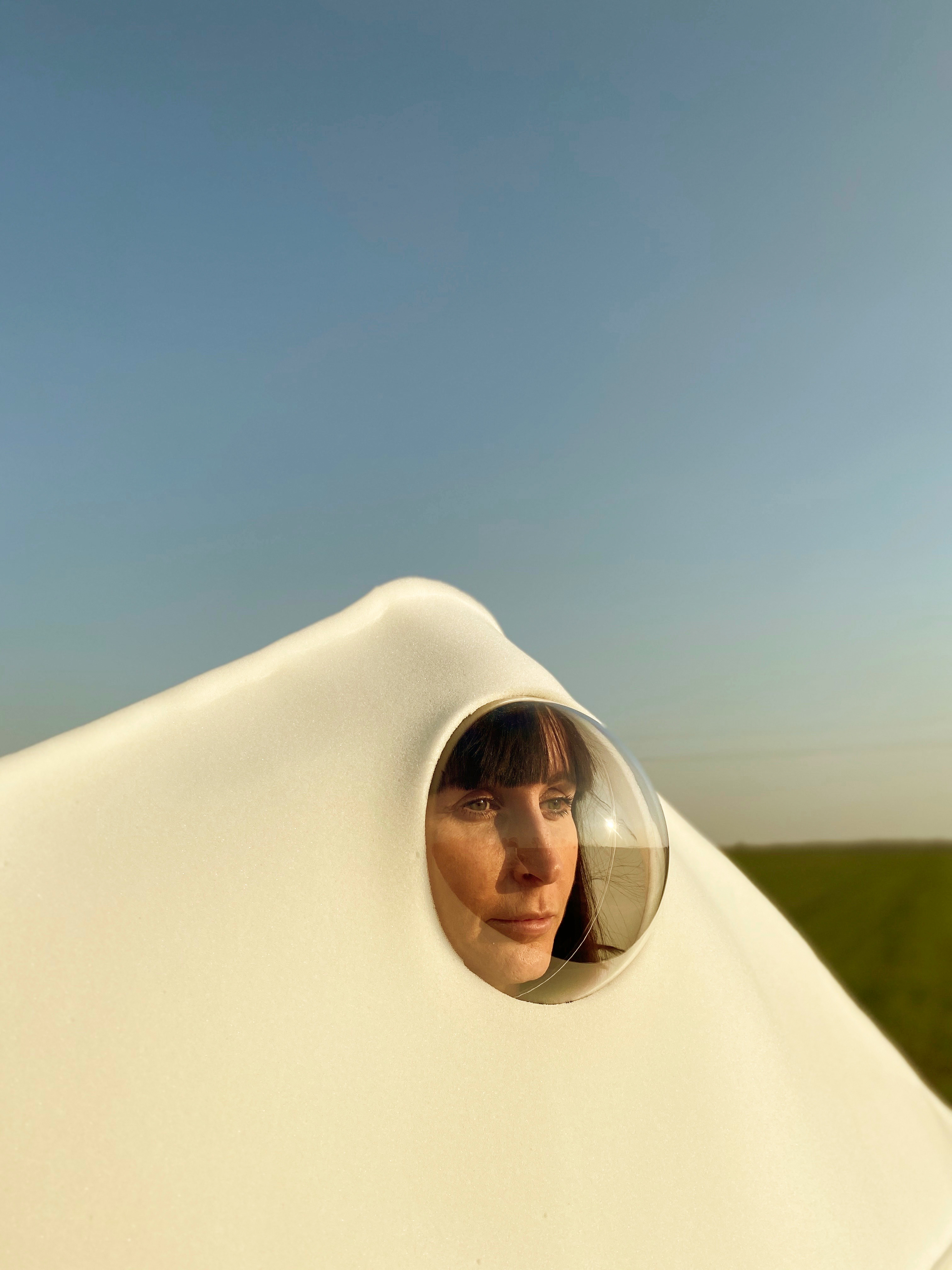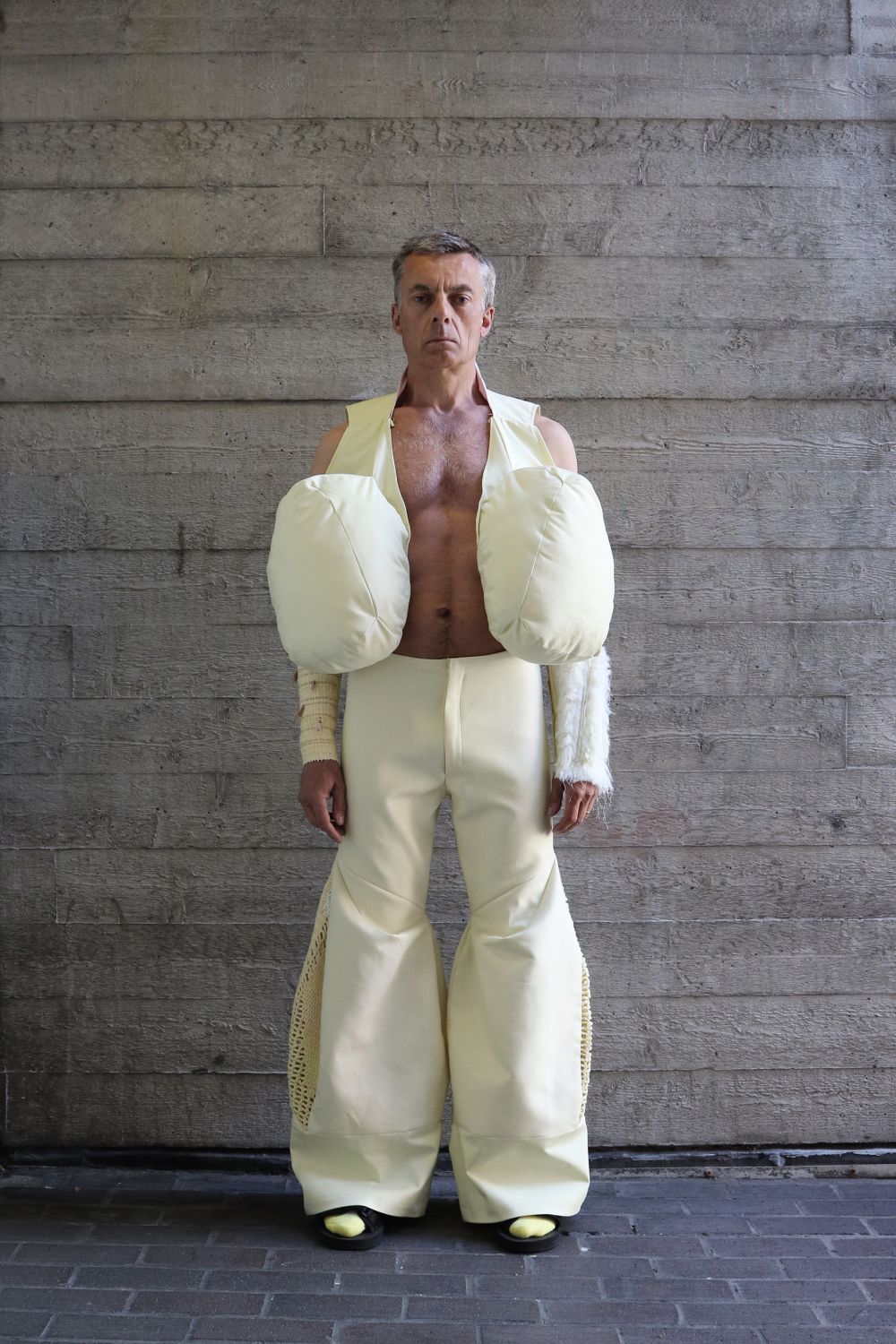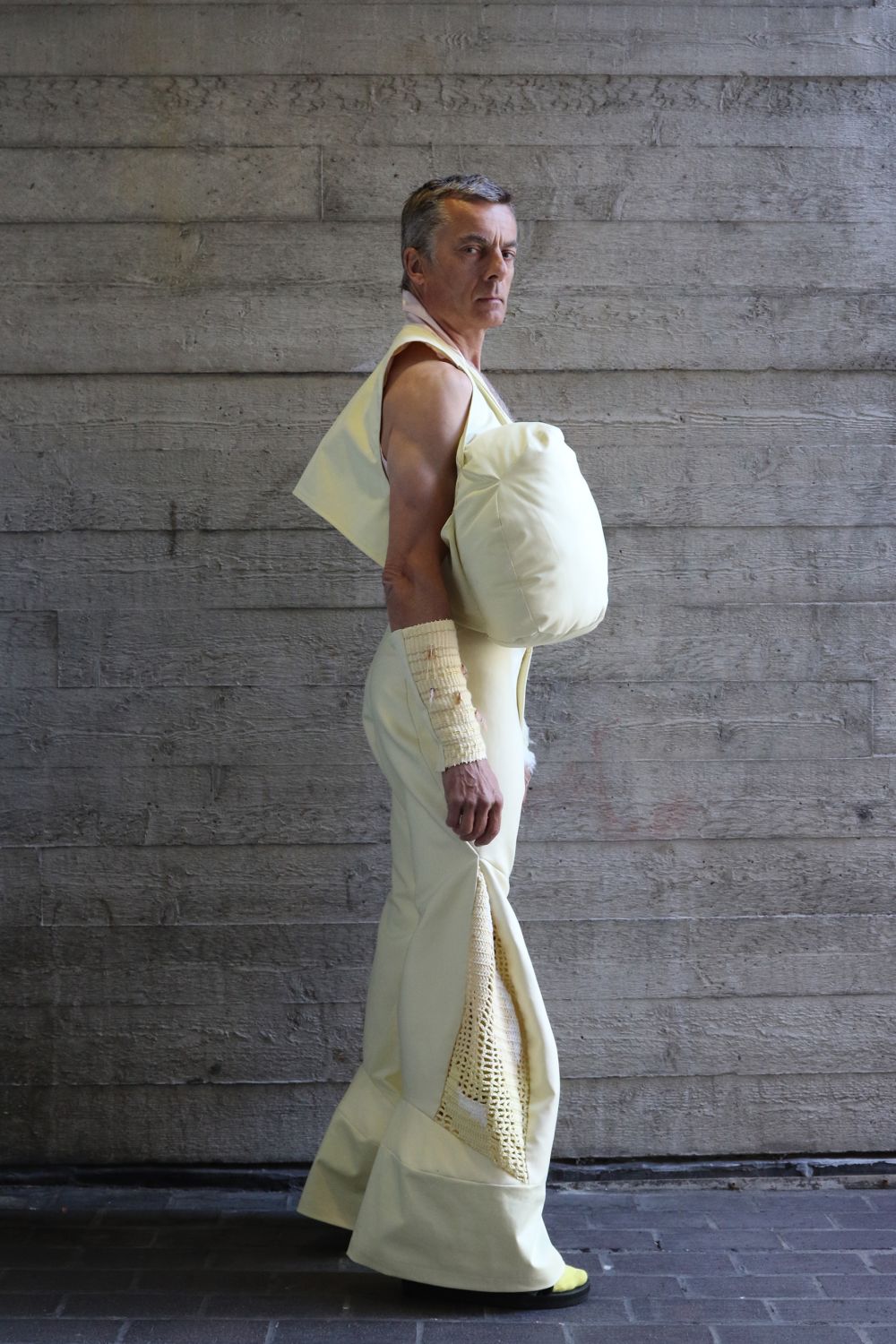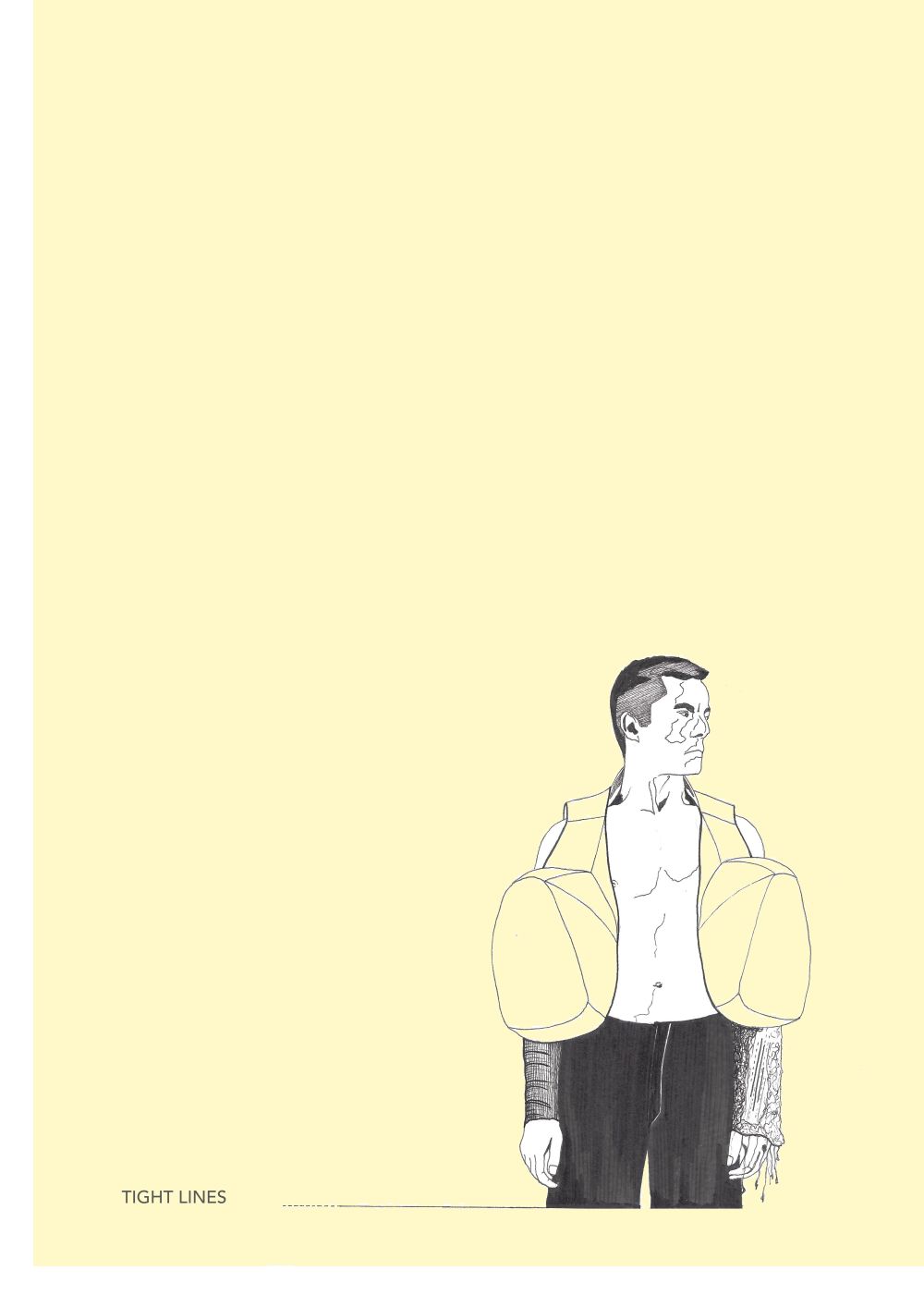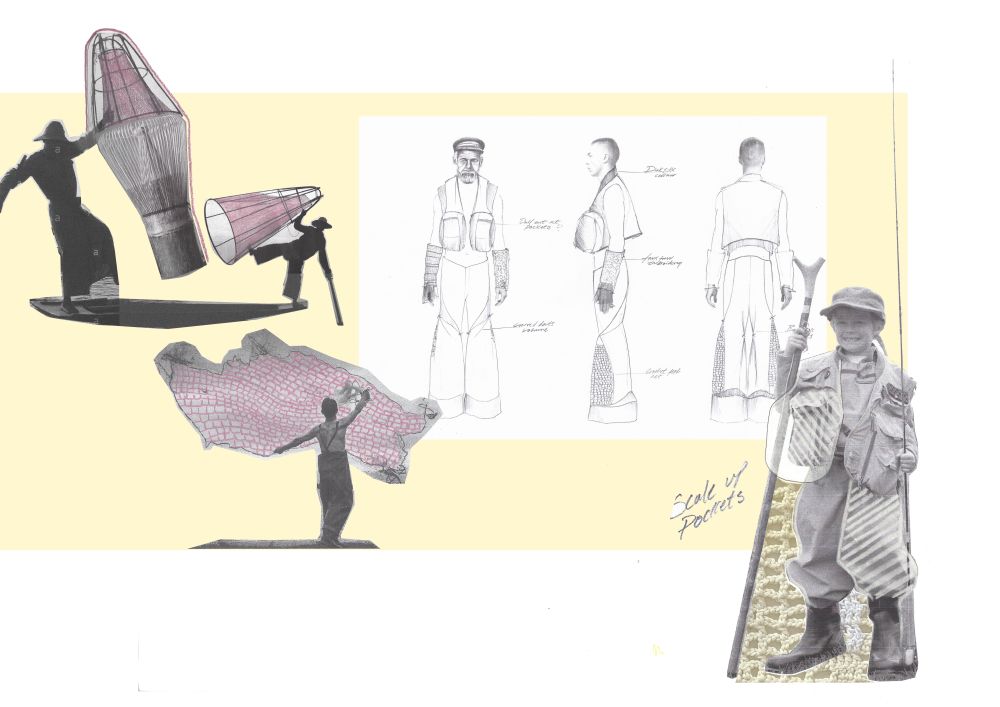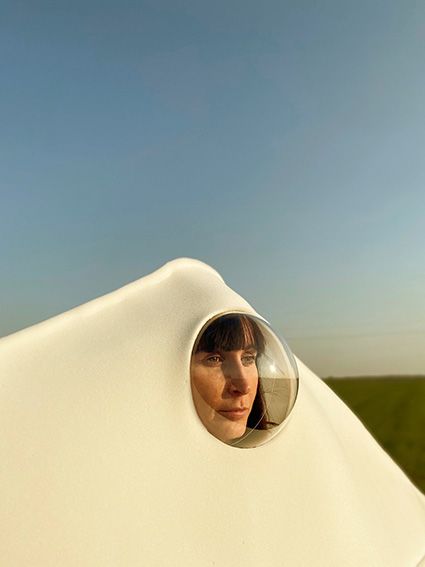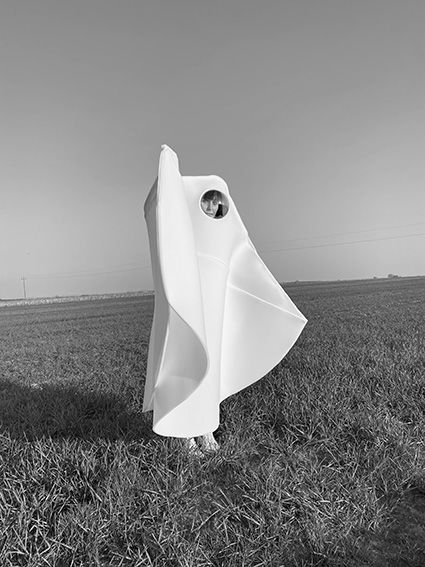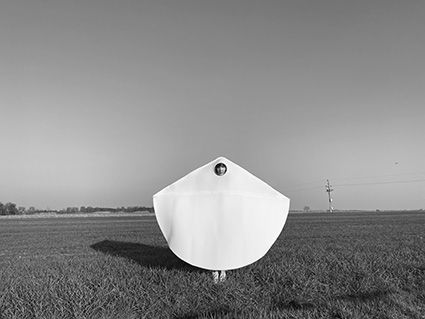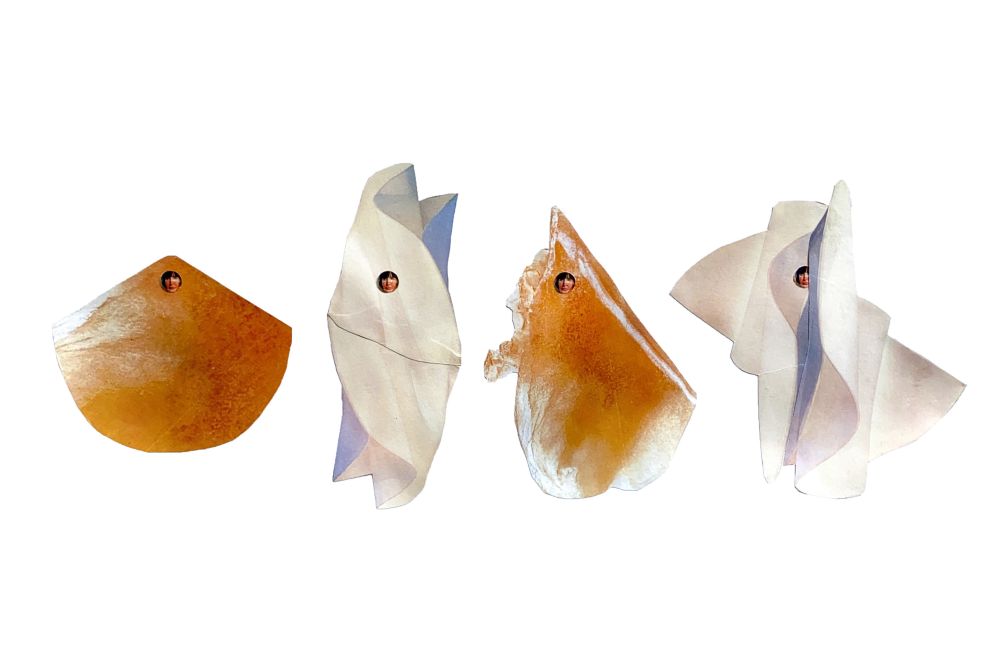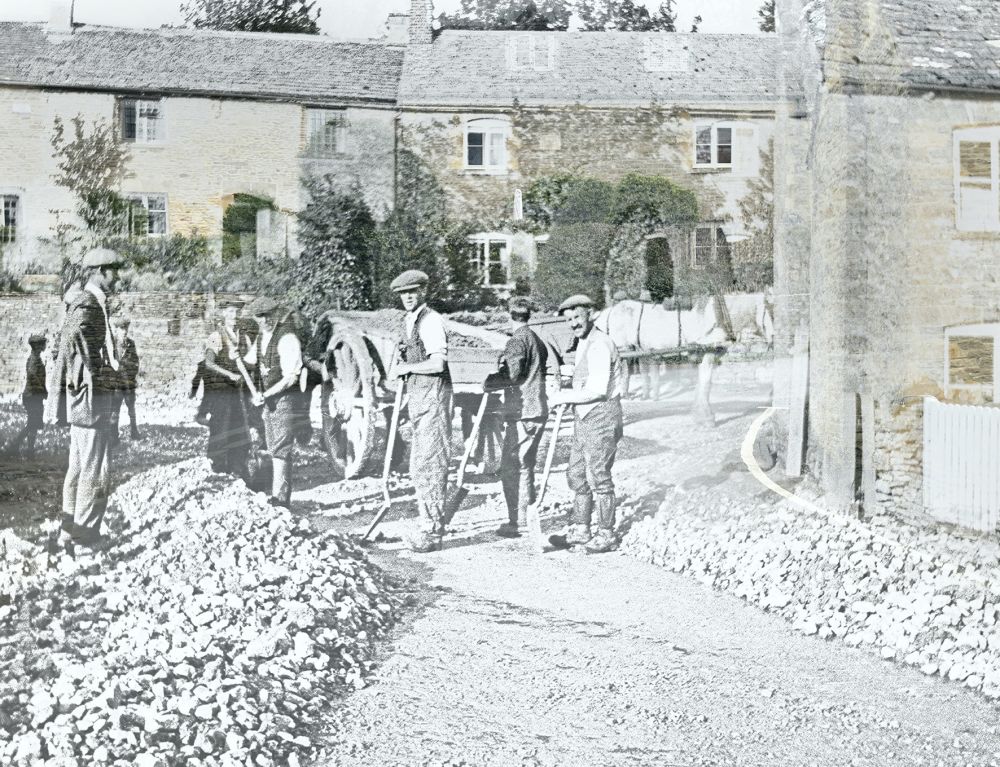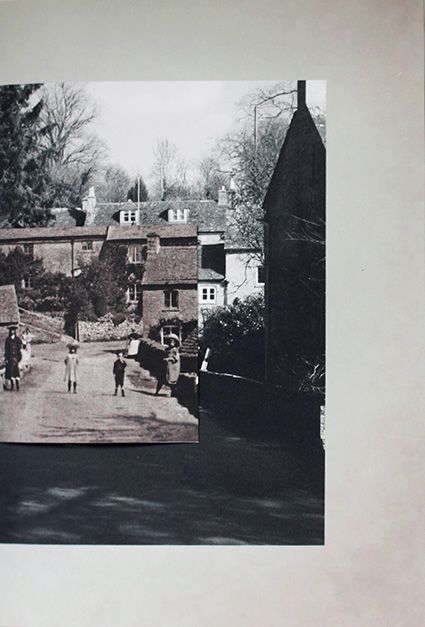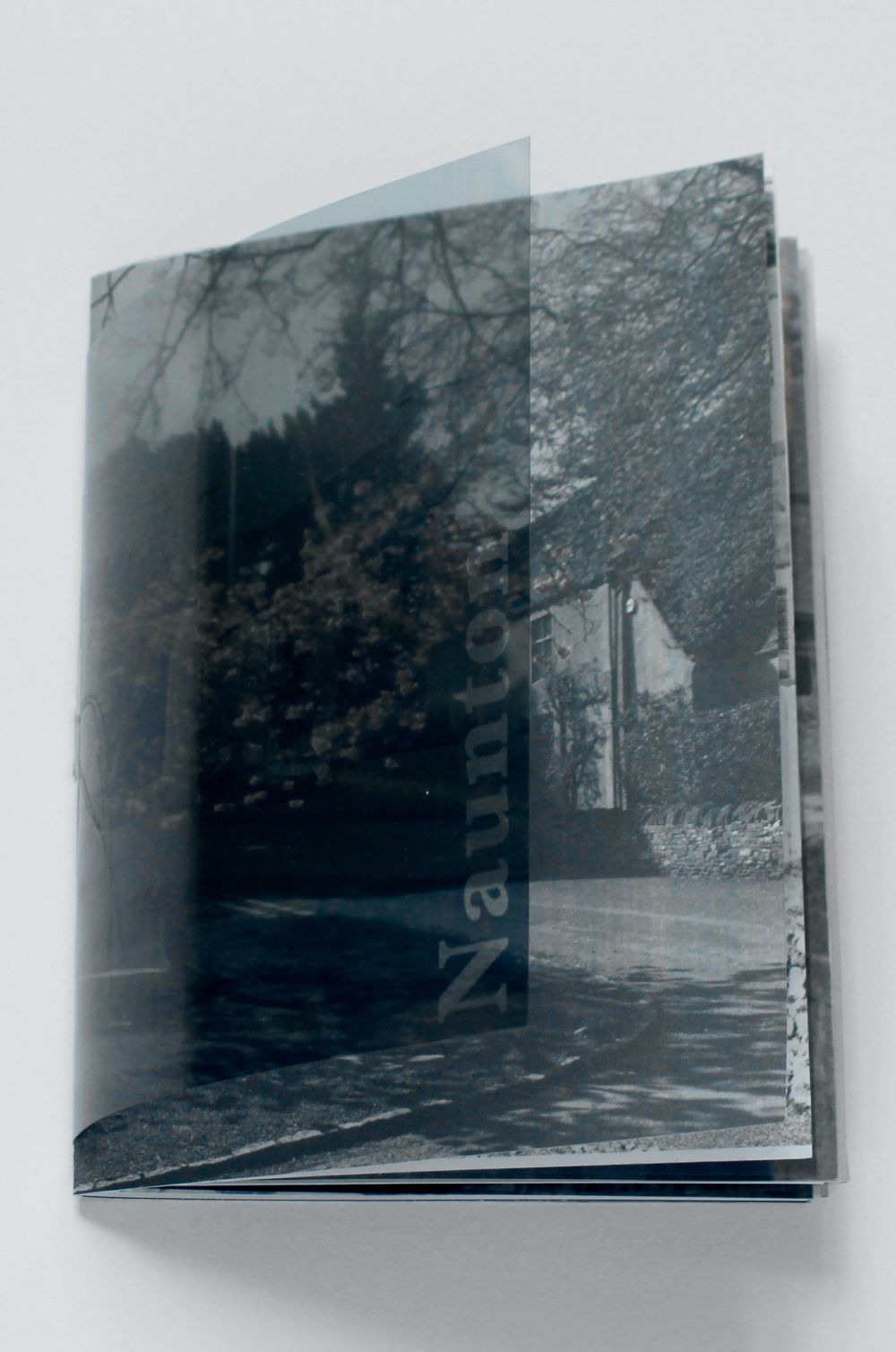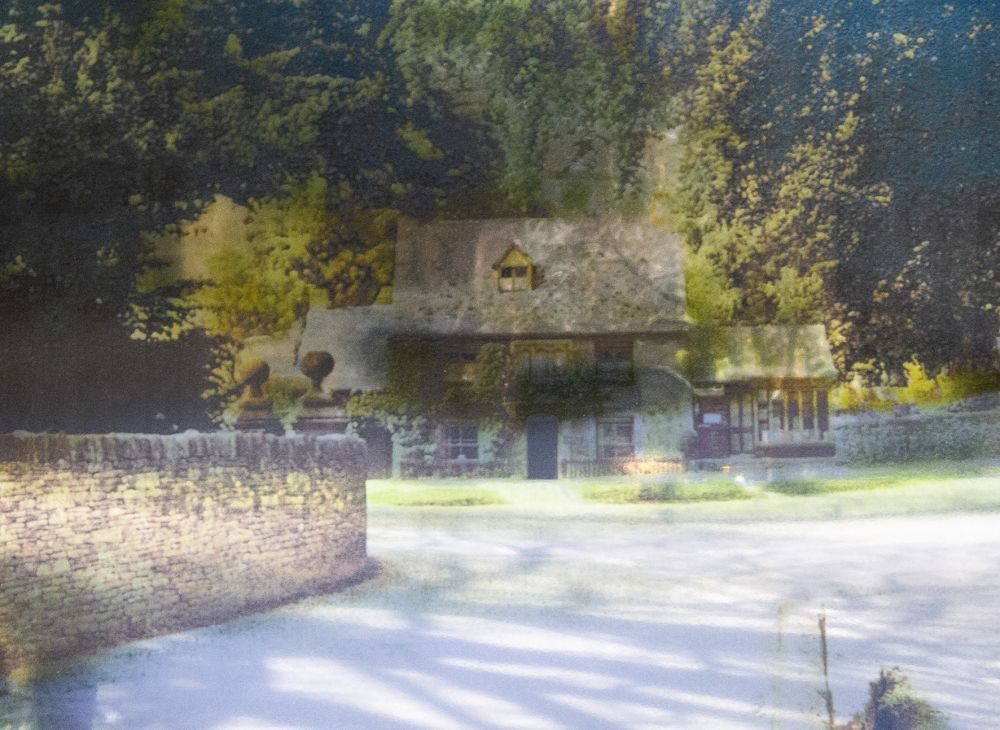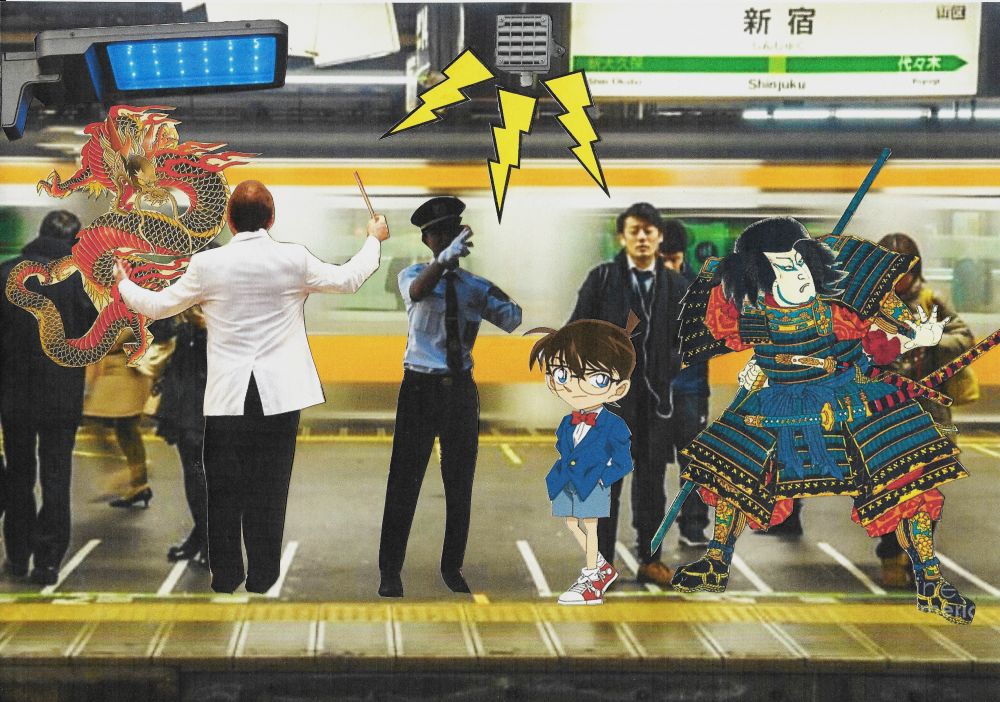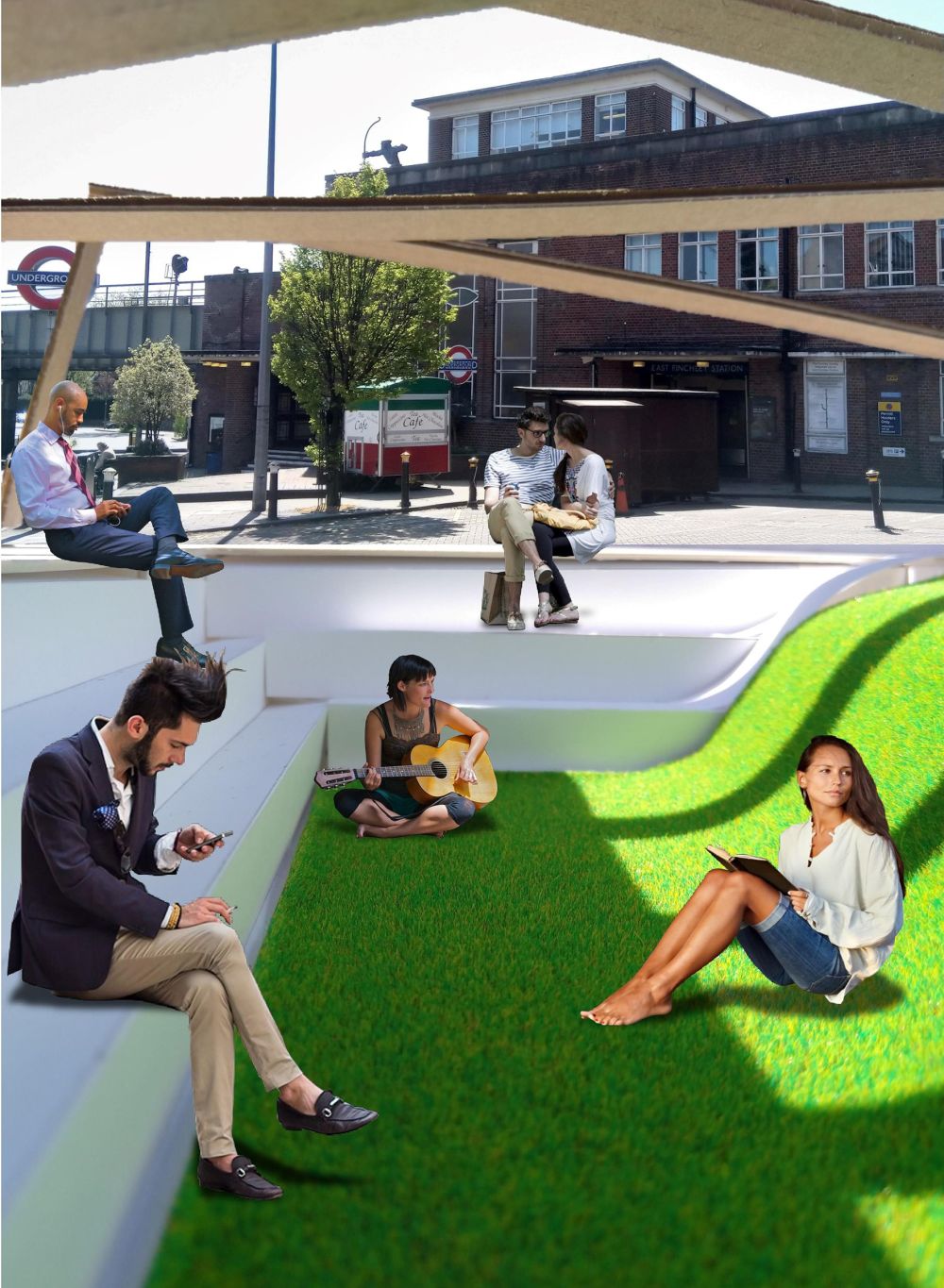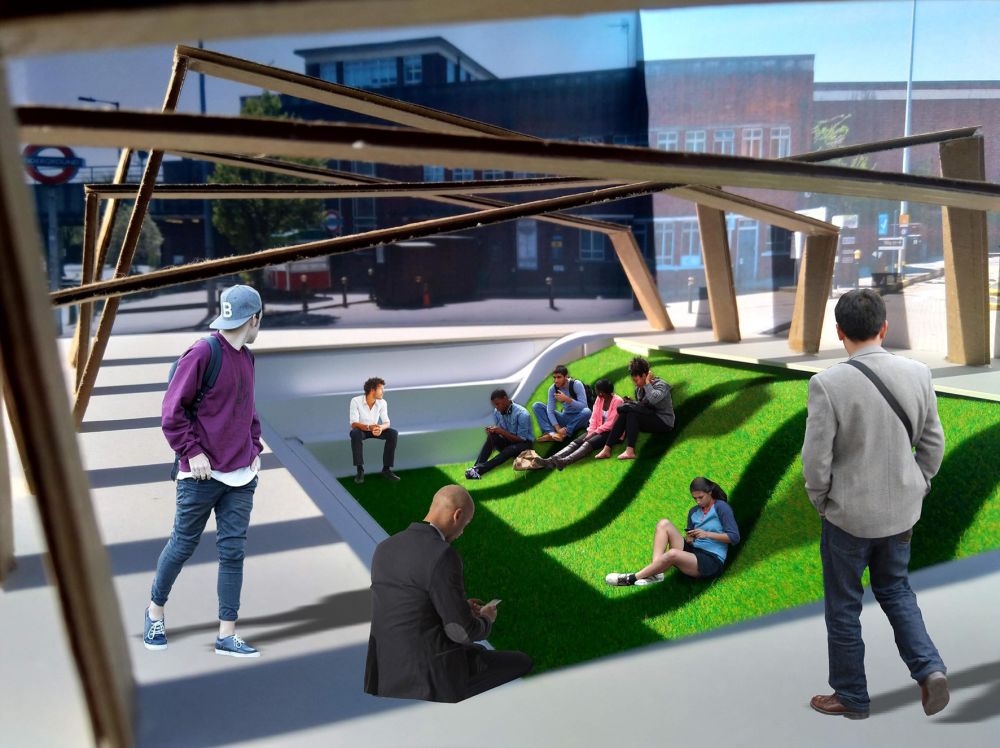Due to coronavirus lockdown, many Foundation students finished their studies away from the College, living in differing degrees of isolation with their families. Looking across disciplines, here we share a few of the projects that look to home and family for inspiration – and a little production support.
“Since I can remember, my dad has taken me fly fishing,” says Harry Jenkins, Fashion and Textiles, “he taught me how to tie my own flies from a young age and studying those flies was my starting point.” Flies are artificial baits made with feathers and thread used to attract fish. Tying flies was the first time that Jenkins had ever picked up a needle and thread, in this final project he used both embroidery and crochet:
“I didn’t know how to crochet before, but I was soon doing it everywhere – it’s therapeutic. It’s the same with fishing too, there’s a lot of standing around in the river, a lot of time to yourself, just casting, just thinking.”
Sketching out early silhouettes Jenkins imagined the garment "dangling on the end of the line, like a fly in the water – how the crochet work would move in relation to the rest. Catching a fish was always down to how the fly moved in the water."
Harry Jenkins, Tight Lines
The project's title, Tight Lines, refers to their way of saying "good luck" to each other before spending the day on the river. Jenkins had always planned for his father to be the model (though his father didn’t know until the morning of the shoot). “I think he was expecting I’d make him something more practical, something he could actually wear fishing," says Jenkins, "I’d do anything to see him standing in the river wearing the final look.”
Family was also the starting point for fellow Fashion and Textiles student Joanna Wirazka. Spending time with her relatives in her Polish hometown included hearing stories about her family history. She focused on her grandmother's cellar as a space impacted by food and clothing shortages experienced by the family but also reflective of the care and resilience required to survive them. Inspired by that feeling of safety, Wirazka created a wearable shelter out of upholstery foam (scavenged in part due to social isolation but also channelling the make do philosophy). The object, both futuristic and sculptural, was worn by her mother in the final shoot so as the garment represents a familial safety, so too does the person wearing it.
Joanna Wirazka, Grandma's Cellar
“While my project focuses on my family’s strength, my mum became a muse as that irreplaceable support. I couldn't find a better person than her to model for this. Having someone who can underpin you during difficult times is essential.”
Place is the central part of many projects this year. For Olivia Mitchell, Graphic Communication Design, her home village became her subject. Interested in alterations within our memories, both individual and collective, Mitchell wanted to explore the visual narratives and biographical accounts that connect people and place. She began documenting her village, using projection to map contemporary and historic photography of the same place. By incorporating various historical sources, such as photographs and archive text, the resulting work reflects the village’s history and portray some of the memories shared by its residents:
“Currently, the act of remembering has more importance than ever... The blending of the past and present in my project acts as an aid to recall the normality many of us now long for.”
Olivia Mitchell, Biographical Objects
For Yalin Kuyumcu-Kominami, from 3-Dimensional Design and Architecture, it was a recurring family memory that sparked his final project. With Japanese and Turkish parents, Kuyumcu-Kominami spent days each summer waiting – and bored – in airports, train and coach stations. “As a kid, the anticipation of getting on a plane or rushing for the train window seat was exciting," he recalls, "however, I also remember the grey, lifeless waiting rooms and harsh steel seats. I wanted to challenge this idea of waiting as stressful, mundane non-time.”
Yalin Kuyumcu-Kominami, The Architecture of Waiting
The project developed into a public space designed for East Finchley station with stepped seating, turfed slopes and shadows cast by timber arches. Completed during lockdown, the project took on a new significance as the meaning of waiting itself changed:
“It's almost ritualistic; queues of people waiting outside supermarkets, two metres apart have become an image of the pandemic and the experience is uncomfortable and anxiety inducing. On the other hand, we are also waiting out the lockdown, staying at home and riding out the storm. Because of this, people value public spaces even more and there is an anticipation for when we can all meet up outdoors again. And so, the ideas of valuing social interaction and pausing to appreciate the calm that originally informed my design now feel even more relevant.”
Next year, Harry Jenkins and Joanna Wirazka will be studying BA Fashion at Central Saint Martins, Yalin Kuyumcu-Kominami will be studying BA Landscape Architecture at the University of Sheffield and Olivia Mitchell will be studying BA Architecture at Central Saint Martins.
